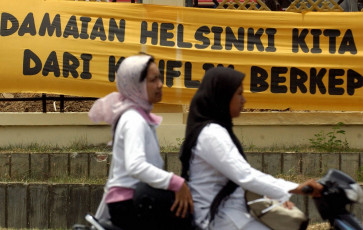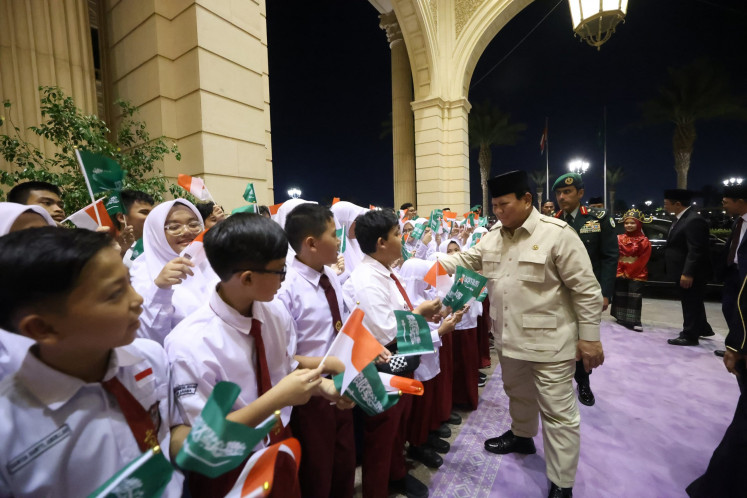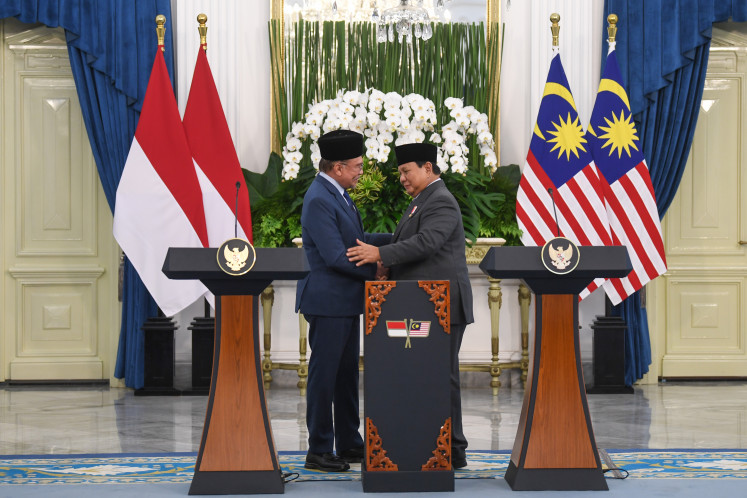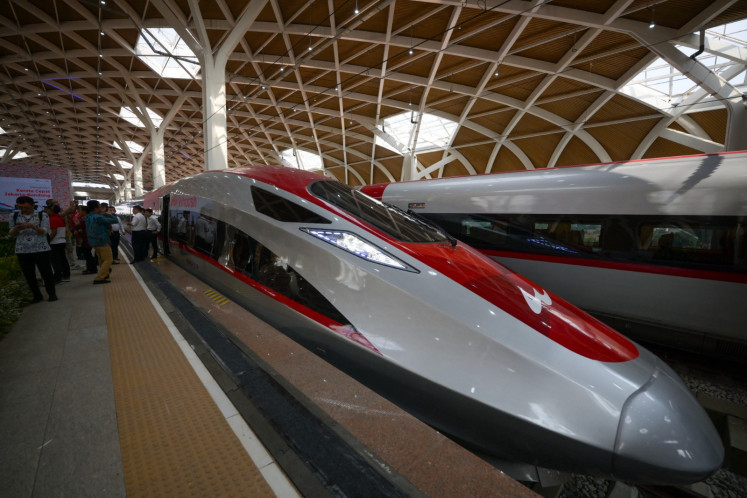Popular Reads
Top Results
Can't find what you're looking for?
View all search resultsPopular Reads
Top Results
Can't find what you're looking for?
View all search resultsThe gossamer curtain
Busy: Gusti Mangku Batur of Tengkulak Kaja makes offerings to the gods together with other women ahead of the collective cremations in her village
Change text size
Gift Premium Articles
to Anyone

B
span class="caption" style="width: 398px;">Busy: Gusti Mangku Batur of Tengkulak Kaja makes offerings to the gods together with other women ahead of the collective cremations in her village.Images of zombies — the walking dead in varying degrees of decay — are the stuff of nightmares in western horror flicks.
The idea of death is promptly buried out of sight in the west, a state of forever gone.
In the east, death is another story entirely. In Bali, it is cremation season, a time to raise loved ones perhaps long dead or recently passed from mossy beds; to wake sleepy spirits in preparation for their last farewells and the coming journey home to the gods.
During the second and third month of the Balinese calendar, communities meet at burial plots and prepare to dig up the bodies of brothers, sisters, mothers, fathers — family members who while perhaps not breathing, are still here in spirit.
There is an extraordinary tenderness in these reunions as skeletons are bathed in perfumed waters, fresh clothing is prepared and fond farewells are made.
“We are sad when we dig our loved ones up for cremation. But we are not scared of the bodies. It feels like we are meeting once again and we don’t cry. It’s not nice to cry, because it tells the souls we are not willing for them to go. We are proud to help them go,” says 51-year-old Wayan Lebih of Banjar Juga in Mas. He says the atmosphere at the exhumations is festive.
“It’s really busy, there are a lot of people. There are children. They are not scared when we dig up the bodies; they come along, it is really busy, it’s like meeting family,” Wayan says.
To lower the risk of disease from recently interred bodies, newly deceased are cremated some weeks ahead of the community cremations called ngaben and their ashes kept safe.
According to Tengkulak Kaja village head, 67-year-old Gusti Made Mawa, decomposing bodies from his village are raised and cremated before dawn by people trained in this difficult task.
“As a community we exhume only long dead bodies that have decayed to their bones. We have special people who take the newly dead from their graves so not everyone sees these — this is to prevent trauma when people might even vomit or become frightened. The bodies are then washed and burned before joining the ngaben ceremony,” Gusti says.
There is great wisdom in Balinese burial practices, besides families having real time to grieve and to meet one last time before the souls depart to the heavens, the reusable family burial plots ensure land space is not lost to the dead.
“In my village, I have a family burial plot. It measures around 12 meters by 3 meters — it has never been full, so there is always space to bury our dead,” says Wayan, pointing out that once a body has been taken from its resting place in the humid earth and cremated, the burial plot becomes usable again.
Over the next few weeks, Wayan and others in his village will spend days preparing for a collective cremation, removing bodies from family burial plots and sending their souls through the smoke to the gods, with their burnt remains tossed into the sea.
“In the past we carried these remains to the rivers that led out to the sea, but now with better transport we take them straight to the beach. We do this so the souls can return to their roots,” says Wayan while explaining that people are made up of four elements: earth, wind, fire and air. Balinese cremation ceremonies ensure all these elements are restored.
To do this demands ceremonies repeated many times. The magnificent mass cremations are like the tip of an iceberg, more discreet are the daily and weekly rituals for the dead that begin long before the cremation and continue for weeks after, from the calling of the spirits of the dead through the sanggar urip three days ahead of the cremation and the calling on the god of death, Siwa, to release the souls under his care, to the repeated burnings of bones and ash and their return to the sea to be called back again to be burnt following the cremation.
“The sanggar urip ceremony happens three days before cremation. At this time we tell the dead it is time to go, and we ask Siwa to release the souls before cremation so they can return to their roots,” says Wayan, who on Sept. 22 will send his older brother to the heavens, journeying on the smoke and flames of his sarcophagus.
The weeks spent creating offerings, building sarcophagi and taking time off work to give the hours to the community ahead of the collective cremations takes a massive toll on community resources, but it is most often a shared toll, says Wayan.
He earns around Rp 1.3 million (US$150) per month, just enough to keep his family fed, housed and educated; his brother’s cremation will set him back Rp 7 million. If Wayan was going it alone he would be looking at a bill of more than Rp 30 million.
“My brother was a teacher so he received insurance that pays for his cremation. In our community if people don’t have this money we all chip in, because people must be cremated within five years of dying. If not, the spirits start to become agitated and begin disturbing the community.

In Gusti’s village of Tengkulak Kaja, men are busy decorating sarcophagi shaped like bulls while women create thousands of offerings.
“We hold collective cremations every three years, sometimes more often. If families have mayat [bodies] to cremate they pay Rp 5 million, everyone else in the village donates Rp 250,000, so it’s gotong royong [working together],” says Gusti, who is quick to say, “the payment for a collective funeral is less than the Rp 45 million it would cost for an individual cremation, but the quality is exactly the same so it’s good for the people. Why? Because people pay a little, yet receive high quality because we use gotong royong. We feel together; the 500 people in our community are one big family, we share the cost and the emotion,” Gusti says.
In the background, dozens of women dressed in sarong and kebaya chatter and share stories of loved ones while their hands are busy creating the thousands of banten, or offerings, needed for the collective ngaben.
There is a binding of community spirit in this shared farewell to loved ones that benefits the souls of both the living and the dead.
— Photos By JP/J.B. Djwan









